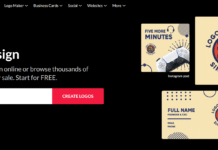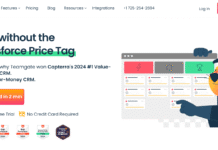How to Choose a Business Model for a Startup? (Complete Guide 2025)
When building a startup, one of the hardest and most important decisions you will ever face is choosing the right business model for a startup. Without a solid framework for creating, delivering, and capturing value, even the most innovative idea will struggle to survive. A business model for a startup is the engine that powers growth, attracts investors, and ensures long-term sustainability.
Startups across industries—from SaaS to e-commerce to fintech—face the challenge of identifying the best business model for a startup. Some rely on subscriptions, others on one-time purchases, advertising, or hybrid approaches. What works in Silicon Valley may not work in Dubai or Tehran. That’s why this guide is designed to help you explore proven strategies, common mistakes, real-world examples, and market-driven trends. By the end, you’ll understand not only how to select a business model for a startup, but how to validate, scale, and adapt it to changing environments.
We’ll cover 15 practical angles, from subscription vs one-time models to investor expectations, AI-driven innovations, and pivoting strategies. Whether you’re an early-stage founder or preparing for Series A funding, this resource will give you a roadmap to design the best business model for a startup in 2025 and beyond.
Choosing the Right Business Model for a Tech Startup
Tech founders often focus on building cutting-edge products, but without the right business model for a startup, growth stalls quickly. A strong model determines how you make money, scale operations, and compete in global markets. Whether SaaS, marketplace, or advertising-based, your model should align with customer behavior and market conditions.
For example, SaaS startups in Dubai have succeeded with subscription models, while Iranian e-commerce ventures thrive on commission-based sales. Both illustrate how location-specific realities affect the business model for a startup. Global case studies, like Uber’s marketplace approach or Zoom’s freemium subscriptions, show how flexibility can unlock growth.
- Analyze customer payment preferences: subscription, one-time, or usage-based?
- Evaluate scalability: can the business model for a startup grow faster than costs?
- Study competitors’ models for insights and opportunities.
- Factor in regulations and regional constraints.
- Test assumptions with MVPs before committing fully.
| Model | Strengths | Weaknesses |
|---|---|---|
| Subscription | Predictable revenue | Churn risk |
| Freemium | Fast adoption | Low conversion |
| Marketplace | Network effects | Balance supply & demand |
| Advertising | Free to users | Needs huge scale |
Choosing the right business model for a startup is the foundation of success. Next, we’ll dive into SaaS-specific models.
Best Business Models for SaaS Startups
SaaS businesses live and die by recurring revenue. The subscription-based business model for a startup is the gold standard, but freemium, usage-based, and hybrid models also play big roles. The challenge is balancing adoption with monetization.
Examples include Slack’s per-user pricing and Zoom’s freemium conversion engine. Both show how aligning the business model for a startup with customer psychology ensures scalability. In the Middle East, SaaS startups often adapt pricing tiers to local purchasing power, while in Iran, hybrid low-cost subscriptions help overcome payment limitations.
- Adopt tiered pricing to serve multiple customer segments.
- Focus on retention—churn can destroy a SaaS business model for a startup.
- Use usage-based pricing when fairness and scalability are priorities.
- Add services like integrations and support to boost ARPU.
- Balance growth with profitability when using freemium.
| Model | Best Fit | Risks |
|---|---|---|
| Freemium | Viral tools | Low paid conversion |
| Tiered Subscription | SMEs, enterprises | Complex structure |
| Usage-Based | APIs, storage | Revenue fluctuations |
| Flat Rate | Simple SaaS | Limited scalability |
For SaaS founders, the right business model for a startup is a mix of flexibility, predictability, and customer alignment. Next, let’s see how to validate models before scaling.
How to Validate a Business Model Before Launching a Startup
Validating a business model for a startup ensures you don’t waste time or capital on untested assumptions. Many founders fail because they never tested whether customers would actually pay. Validation reduces risk and builds investor confidence.
Case study: A UAE edtech startup piloted its subscription-based business model for a startup with 50 users, tracking churn and renewals. Only after proving traction did they scale. In Iran, early-stage e-commerce ventures test demand through Instagram shops before launching full platforms.
- Launch an MVP to test assumptions quickly.
- Use pre-orders and surveys to validate willingness to pay.
- Track CAC, LTV, and churn carefully.
- Experiment with pricing via A/B testing.
- Get investor feedback early on.
| Method | Strength | Weakness |
|---|---|---|
| MVP | Real usage data | Limited scalability insight |
| Pre-Orders | Customer intent | Not always reliable |
| A/B Pricing | Clear data | Requires sample size |
| Pilot | Safe and controlled | Slower scaling |
Validating the business model for a startup before scaling saves money and prevents costly pivots. Next, we’ll compare B2B vs B2C approaches.
Difference Between B2B and B2C Business Models for Startups
Choosing between B2B and B2C defines the structure of your business model for a startup. B2B means longer cycles and bigger contracts; B2C means faster adoption but higher churn. Both have pros and cons, and aligning with your market is critical.
Examples: Salesforce is a B2B SaaS giant, while Netflix is a B2C subscription model. In the UAE, fintech startups thrive on B2B, while delivery apps succeed with B2C. In Iran, e-commerce platforms dominate B2C, while SaaS B2B is still developing.
- B2B focuses on contracts and relationships.
- B2C emphasizes marketing, UX, and scale.
- B2B means higher LTV but slower cycles.
- B2C means faster adoption but revenue volatility.
- Funding preferences often differ—VCs may value predictable B2B more.
| Aspect | B2B | B2C |
|---|---|---|
| Audience | Companies | Consumers |
| Pricing | Contracts, high value | Mass market |
| Sales Cycle | Long | Short |
| Revenue | Stable | Volatile |
| Example | HubSpot | Spotify |
Understanding whether B2B or B2C is the right business model for a startup helps shape strategy. Next, we’ll look at scalability.
How to Create a Scalable Business Model for a Startup
Scalability separates small ventures from unicorns. A scalable business model for a startup grows revenue faster than costs. SaaS and marketplaces are highly scalable; service-heavy startups are not unless they integrate automation.
Example: Careem scaled by building a platform instead of owning cars. Iranian startups often bootstrap, testing models locally before scaling. Both approaches show how scalability must be baked into the business model for a startup from day one.
- Automate processes to reduce human dependency.
- Leverage technology like AI and cloud infrastructure.
- Design repeatable systems for new markets.
- Track unit economics—LTV must exceed CAC.
- Secure funding for upfront scaling costs.
| Model | Scalability | Challenges |
|---|---|---|
| SaaS | High | Churn, competition |
| Marketplace | High | Supply-demand balance |
| E-commerce | Medium | Logistics |
| Services | Low | People-dependent |
A scalable business model for a startup is essential for attracting investors and achieving exponential growth. Next, we’ll explore examples of successful models in 2025.
Examples of Successful Startup Business Models in 2025
By 2025, the startup ecosystem has matured, but the foundation of success still lies in having the right business model for a startup. Startups that adapt to customer needs and market realities scale quickly, while those that don’t often fade away. Case studies across regions highlight how flexibility in designing a business model for a startup makes the difference between survival and failure.
For instance, Jasper, an AI SaaS platform, built a subscription-based business model for a startup that scaled to millions of users worldwide. In the UAE, Tabby’s Buy Now Pay Later (BNPL) model fit local consumer habits and gained massive traction. In Iran, Digikala became a leader in e-commerce through a commission-based marketplace model. These examples illustrate that the best business model for a startup depends on aligning with customer psychology, infrastructure, and regional challenges.
- AI SaaS platforms thrive on subscriptions and usage-based fees.
- Fintech startups win with innovative models like BNPL.
- Marketplaces succeed by leveraging network effects.
- D2C brands rely on cutting intermediaries to maximize margins.
- Hybrid freemium balances scale with monetization.
| Startup | Region | Model | Success Factor |
|---|---|---|---|
| Jasper | Global | SaaS Subscription | Recurring revenue |
| Tabby | UAE | BNPL Fintech | Localized credit model |
| Digikala | Iran | E-commerce Marketplace | Logistics & trust |
| Careem | MENA | Ride-hailing Marketplace | Scalability & network |
Looking at these cases helps founders design a stronger business model for a startup in 2025. Next, let’s examine low-cost approaches for early-stage founders.
Low-Cost Business Model Ideas for Early-Stage Startups
Not every founder has access to venture funding. Many rely on bootstrapping and need a lean business model for a startup that keeps costs low. Service-based, dropshipping, affiliate marketing, and micro-SaaS are some of the most common strategies to start lean while building traction.
In the UAE, cloud kitchens help food entrepreneurs reduce overhead while testing demand. In Iran, many founders begin with Instagram shops before investing in e-commerce infrastructure. These low-cost models allow validation of the business model for a startup without burning too much capital.
- Offer services first, then productize later.
- Leverage social platforms instead of building from scratch.
- Create micro-subscriptions for niche SaaS tools.
- Use dropshipping to avoid inventory costs.
- Run affiliate models to monetize content cheaply.
| Model | Cost | Scalability | Use Case |
|---|---|---|---|
| Dropshipping | Very low | Medium | E-commerce |
| Affiliate | Low | High | Content sites |
| Services | Low | Low | Freelancers |
| Micro-SaaS | Low | High | Developers |
| Cloud Kitchen | Medium | Medium | Food startups |
These ideas give flexibility to design a low-cost business model for a startup until external funding is secured. Next, we’ll cover choosing revenue models strategically.
How to Choose a Revenue Model for a Startup
Revenue is the lifeblood of any business model for a startup. Picking the right revenue model ensures survival and growth. Options include subscription, transaction-based, advertising, licensing, and hybrid. Each has trade-offs that affect customer acquisition, scalability, and investor appeal.
Spotify illustrates a hybrid model—ads plus subscriptions—that monetizes both free and paying users. Ride-hailing startups like Snapp in Iran use transaction-based commissions. These prove that designing the right business model for a startup sometimes requires mixing approaches.
- Match the model to customer preferences (small payments vs recurring plans).
- Prioritize recurring revenue when possible.
- Diversify income to avoid over-reliance on one source.
- Test pricing aggressively before scaling.
- Ensure the model can scale as the customer base grows.
| Revenue Model | Strength | Weakness |
|---|---|---|
| Subscription | Predictable revenue | Churn |
| Transaction | Scales with volume | Volatile |
| Advertising | Monetizes free users | Requires scale |
| Licensing | High one-time revenue | Less predictable |
| Hybrid | Diversification | Complex |
The right revenue design strengthens the overall business model for a startup. Next, we’ll compare subscriptions and one-time purchases.
Subscription vs One-Time Purchase Business Models for Startups
Should a business model for a startup rely on subscriptions or one-time sales? Subscriptions provide recurring, predictable revenue, while one-time purchases give immediate cash but lack long-term stability. Both models work depending on product type and customer psychology.
Microsoft Office shifted from one-time licenses to subscriptions (Office 365), boosting LTV and stability. Meanwhile, gaming companies balance one-time purchases with microtransactions. The best business model for a startup often blends both approaches to maximize flexibility.
- Subscriptions build stronger customer relationships.
- One-time sales deliver quick cash but may limit scalability.
- Hybrid models combine the best of both worlds.
- Churn is the biggest subscription risk.
- Acquisition costs matter more in one-time models.
| Aspect | Subscription | One-Time |
|---|---|---|
| Revenue | Recurring | Immediate |
| Scalability | High | Moderate |
| Customer Loyalty | High | Low |
| Example | Netflix | Gaming |
Startups can design a business model for a startup that blends both models to balance cash flow and predictability. Next, we’ll explore common mistakes to avoid.
Business Model Mistakes Most Startups Make
Many founders fail not because of weak products, but because of flawed business model for a startup designs. Common pitfalls include overestimating demand, unsustainable pricing, lack of scalability, and reliance on a single revenue stream.
Delivery startups in Dubai burned cash on endless discounts, while some Iranian e-commerce platforms collapsed due to expensive logistics built into their business model for a startup. Global failures often come from ignoring unit economics—when CAC outweighs LTV, growth becomes impossible.
- Avoid overestimating market size.
- Set sustainable pricing based on customer willingness to pay.
- Design for scalability from the start.
- Diversify income to reduce risk.
- Validate all assumptions before full launch.
| Mistake | Consequence | Fix |
|---|---|---|
| Overestimating demand | Low adoption | Validate early |
| Bad pricing | Churn/loss | Test with A/B |
| No scalability | Costly growth | Automate |
| One revenue stream | Vulnerability | Diversify |
| No validation | High risk | Use MVPs |
By avoiding these pitfalls, you strengthen the business model for a startup. Next, we’ll move to a step-by-step design framework.
Step-by-Step Guide to Designing a Startup Business Model
Designing a business model for a startup is not just about making money. It’s about creating a system that defines who your customers are, how you provide value, and how you capture revenue. A well-structured model makes it easier to test assumptions, attract investors, and scale efficiently.
Frameworks like the Business Model Canvas and Lean Canvas give founders tools to design a business model for a startup in a structured way. They break down essential elements such as customer segments, value proposition, revenue streams, and cost structure. For example, a fintech company can map out its segment (young professionals), value (fast credit access), channels (mobile apps), and revenue (subscription or fees). This clarity reduces risk and strengthens execution.
- Identify your customer segment and pain points.
- Craft a compelling value proposition that solves those pains.
- Select the right channels to reach customers effectively.
- Define revenue streams clearly—subscription, transaction, or hybrid.
- Analyze key resources and cost structures to ensure sustainability.
| Step | Question | Example |
|---|---|---|
| Customer Segment | Who are they? | SMEs, freelancers |
| Value Proposition | Why choose us? | Faster, cheaper, digital-first |
| Channels | How to reach? | Mobile, social media |
| Revenue | How do we earn? | Subscription + commission |
| Costs | Main expenses? | Tech, marketing |
By following these steps, founders can design a flexible and effective business model for a startup. Next, let’s compare Lean Canvas and Business Model Canvas frameworks.
Lean Canvas vs Business Model Canvas for Startups
When creating a business model for a startup, two popular frameworks are Lean Canvas and Business Model Canvas. While both are useful, they serve different purposes depending on the startup stage.
The Business Model Canvas is more comprehensive, covering partners, resources, and operations. Lean Canvas focuses on early-stage issues like customer problems, solutions, and key metrics. A SaaS startup in Dubai planning global expansion might use the Business Model Canvas, while an Iranian founder testing a small e-commerce idea could benefit from Lean Canvas.
- Use Lean Canvas when validating an idea quickly.
- Use Business Model Canvas for growth planning and investment pitches.
- Both should be updated regularly as the business evolves.
- Investors often prefer seeing a Business Model Canvas for later-stage startups.
| Aspect | BMC | Lean Canvas |
|---|---|---|
| Best For | Scaling stage | Early validation |
| Focus | Partners, operations | Problems, solutions |
| Investor Appeal | High | Moderate |
| Complexity | Detailed | Simplified |
Choosing the right framework helps design a business model for a startup that matches its stage. Next, we’ll explore how investors evaluate these models.
How Investors Evaluate a Startup’s Business Model
Investors don’t just fund ideas—they fund models. When evaluating a business model for a startup, they look for scalability, predictable revenue, and strong unit economics. Startups that show traction with paying customers have a clear advantage in fundraising.
Key metrics like lifetime value (LTV), customer acquisition cost (CAC), and churn rates matter deeply. For example, a SaaS startup with low CAC and high LTV demonstrates a sustainable business model for a startup. Investors also consider total addressable market (TAM) and growth potential before committing capital.
According to Investopedia, one of the most critical factors in valuing a startup is its scalability and the strength of its business model for a startup. Investors closely examine how the model captures revenue, sustains growth, and adapts to changing markets.
- Show evidence of recurring revenue through subscriptions or contracts.
- Highlight scalability—growth should not depend heavily on rising costs.
- Demonstrate strong unit economics with positive LTV/CAC ratios.
- Provide traction data such as active users or MRR growth.
- Be transparent about risks and strategies to mitigate them.
| Factor | What Investors Want | Why It Matters |
|---|---|---|
| Revenue Model | Recurring income | Reduces risk |
| Unit Economics | Profitable customers | Proves sustainability |
| Market Size | Large TAM | Supports growth |
| Scalability | Low cost growth | Enables expansion |
| Traction | Paying customers | Validates demand |
Understanding how investors think helps design a stronger business model for a startup. Next, we’ll look at trends shaping models in 2025.
Business Model Trends in Technology Startups
Technology moves fast, and so do business models. By 2025, certain trends dominate the way founders design a business model for a startup. AI, platforms, sustainability, and decentralization are the key themes driving innovation.
AI-powered SaaS tools often combine subscriptions with usage-based pricing. Platform ecosystems generate massive value by enabling third parties. In the Middle East, fintechs and healthtechs ride these trends, while in Iran, marketplaces and edtech platforms adapt models to local realities.
- AI SaaS: subscription plus usage billing.
- Platform models: network effects and developer ecosystems.
- Green models: integrating sustainability with profitability.
- Decentralized finance (DeFi): new revenue systems through blockchain.
- Hybrid revenue streams: advertising plus subscriptions.
| Trend | Example | Impact |
|---|---|---|
| AI SaaS | Jasper, OpenAI | Recurring and scalable |
| Platform | Careem, AWS | Strong ecosystems |
| Sustainability | Climeworks | ESG investment |
| DeFi | Uniswap | Peer-to-peer finance |
| Hybrid | Spotify | Diversified revenue |
These trends highlight where the future of a business model for a startup is heading. Next, let’s examine how to pivot when things don’t work.
How to Pivot Your Startup to a New Business Model
Pivots are sometimes the only way to survive. A pivot means changing the business model for a startup when the original one fails to deliver. It may involve changing revenue streams, customer segments, or even the entire product positioning.
Slack pivoted from gaming to communication. YouTube pivoted from a dating platform to global video sharing. Both prove that adapting the business model for a startup can unlock massive success. In the Middle East, food startups pivoted to cloud kitchens during the pandemic, while in Iran, e-commerce players shifted from holding inventory to dropshipping.
- Identify warning signs such as declining revenue or unsustainable costs.
- Listen to customers—they often reveal what’s missing.
- Test new models with small pilots before full pivot.
- Keep investors and stakeholders informed.
- Act quickly to avoid running out of resources.
| Startup | Original Model | Pivoted Model | Outcome |
|---|---|---|---|
| Slack | Gaming | Team communication | Acquired for $27B |
| YouTube | Dating | Video sharing | Bought by Google |
| Check-in app | Photo sharing | 1B+ users | |
| Snapp | Inventory-heavy | Dropshipping | Lean and scalable |
Pivoting can transform failure into success. Treating the business model for a startup as a flexible strategy ensures resilience in uncertain markets. With all 15 sections complete, let’s now move to the FAQ section.
Frequently Asked Questions
1. What is the most effective business model for a startup?
The most effective business model for a startup depends on the industry and market conditions. SaaS companies often succeed with subscriptions, while e-commerce platforms use transaction-based models. The key is aligning the business model for a startup with customer expectations and scalability potential.
2. How do I test a business model for a startup?
You can validate a business model for a startup by building an MVP, launching pilot programs, and collecting feedback from real users. Pre-orders, surveys, and A/B testing different pricing strategies are also strong ways to confirm that customers are willing to pay for your product or service.
3. Should my business model for a startup be B2B or B2C?
It depends on your target customers. A business model for a startup targeting enterprises usually fits the B2B approach with longer contracts and higher LTV. If you want to reach consumers directly and grow rapidly, B2C may be better. Each path has unique challenges and opportunities.
4. Is subscription always the best business model for a startup?
No, while subscription provides predictable revenue, it’s not always the right choice. Some startups succeed with one-time purchases, freemium models, or hybrid strategies. The right business model for a startup must match the nature of the product and customer behavior.
5. What are common mistakes when designing a business model for a startup?
Some mistakes include overestimating demand, unsustainable pricing, ignoring scalability, and relying on a single revenue stream. A successful business model for a startup is validated early, diversified, and designed for growth.
6. How do investors evaluate a business model for a startup?
Investors assess revenue predictability, scalability, unit economics (LTV vs CAC), and proof of traction. A business model for a startup that demonstrates paying customers, recurring revenue, and clear growth potential is far more likely to attract funding.
These FAQs highlight the most pressing concerns about building a strong business model for a startup. Now, let’s bring it all together in the conclusion.
Conclusion
Choosing the right business model for a startup is not just a step in the journey—it is the journey itself. The model defines how you deliver value, how you generate revenue, and how you scale sustainably. Throughout this article, we have explored multiple approaches, frameworks, and real-world examples to help founders design, validate, and adapt their strategies.
From SaaS subscriptions to e-commerce marketplaces, each business model for a startup carries unique advantages and risks. Subscriptions provide recurring revenue but require strong retention. One-time purchases deliver quick cash but lack predictability. Hybrid models balance flexibility and stability. The lesson is clear: there is no universal answer—the right business model for a startup depends on the product, market, and timing.
We’ve also seen how geography matters. In the UAE, fintech and SaaS startups thrive with modern infrastructure and VC funding. In Iran, entrepreneurs adapt by building lean models—often starting with social media sales or dropshipping before scaling. These differences prove that a business model for a startup must be tailored to local realities, not just global trends.
Investors play a key role in shaping success. They don’t just back products—they back sustainable models. They look for predictable revenue, healthy unit economics, and large market opportunities. A founder who can clearly articulate the business model for a startup in an investor pitch has a better chance of securing funding and scaling successfully.
Trends like AI SaaS, platform ecosystems, and decentralized finance are reshaping the way startups operate. Founders who adapt these innovations into their business model for a startup can gain long-term competitive advantage. At the same time, sustainability-driven models show that profit and purpose can coexist, attracting ESG-conscious investors worldwide.
One of the most important lessons is flexibility. Slack, YouTube, and Instagram all pivoted their business models before finding product-market fit. A business model for a startup should never be treated as final—it’s a hypothesis that must evolve as the market changes. Listening to customers, running experiments, and being willing to pivot are the marks of resilient founders.
So what does this mean for you? If you’re a founder today, start lean, validate quickly, and build scalability into your business model for a startup. Use frameworks like Lean Canvas for early validation and Business Model Canvas for growth planning. Diversify your revenue streams, track your unit economics, and keep investor expectations in mind. Most importantly, stay flexible—adaptation is the secret to longevity in the startup world.
The path ahead is challenging but exciting. Every great company started with a clear vision and a strong model. Now it’s your turn: What business model for a startup will you choose? How will you validate it? And how will you adapt when challenges come? Share your experiences, ask questions, and connect with communities like Startupik—a hub for startup insights, guides, and tech innovation. Together, we can shape the future of entrepreneurship.
Introduction
When building a startup, one of the hardest and most important decisions you will ever face is choosing the right business model for a startup. Without a solid framework for creating, delivering, and capturing value, even the most innovative idea will struggle to survive. A business model for a startup is the engine that powers growth, attracts investors, and ensures long-term sustainability.
Startups across industries—from SaaS to e-commerce to fintech—face the challenge of identifying the best business model for a startup. Some rely on subscriptions, others on one-time purchases, advertising, or hybrid approaches. What works in Silicon Valley may not work in Dubai or Tehran. That’s why this guide is designed to help you explore proven strategies, common mistakes, real-world examples, and market-driven trends. By the end, you’ll understand not only how to select a business model for a startup, but how to validate, scale, and adapt it to changing environments.
We’ll cover 15 practical angles, from subscription vs one-time models to investor expectations, AI-driven innovations, and pivoting strategies. Whether you’re an early-stage founder or preparing for Series A funding, this resource will give you a roadmap to design the best business model for a startup in 2025 and beyond.
Choosing the Right Business Model for a Tech Startup
Tech founders often focus on building cutting-edge products, but without the right business model for a startup, growth stalls quickly. A strong model determines how you make money, scale operations, and compete in global markets. Whether SaaS, marketplace, or advertising-based, your model should align with customer behavior and market conditions.
For example, SaaS startups in Dubai have succeeded with subscription models, while Iranian e-commerce ventures thrive on commission-based sales. Both illustrate how location-specific realities affect the business model for a startup. Global case studies, like Uber’s marketplace approach or Zoom’s freemium subscriptions, show how flexibility can unlock growth.
- Analyze customer payment preferences: subscription, one-time, or usage-based?
- Evaluate scalability: can the business model for a startup grow faster than costs?
- Study competitors’ models for insights and opportunities.
- Factor in regulations and regional constraints.
- Test assumptions with MVPs before committing fully.
| Model | Strengths | Weaknesses |
|---|---|---|
| Subscription | Predictable revenue | Churn risk |
| Freemium | Fast adoption | Low conversion |
| Marketplace | Network effects | Balance supply & demand |
| Advertising | Free to users | Needs huge scale |
Choosing the right business model for a startup is the foundation of success. Next, we’ll dive into SaaS-specific models.
Frequently Asked Questions
1. What is the most effective business model for a startup?
The most effective business model for a startup depends on the industry and market conditions. SaaS companies often succeed with subscriptions, while e-commerce platforms use transaction-based models. The key is aligning the business model for a startup with customer expectations and scalability potential.
2. How do I test a business model for a startup?
You can validate a business model for a startup by building an MVP, launching pilot programs, and collecting feedback from real users. Pre-orders, surveys, and A/B testing different pricing strategies are also strong ways to confirm that customers are willing to pay for your product or service.
3. Should my business model for a startup be B2B or B2C?
It depends on your target customers. A business model for a startup targeting enterprises usually fits the B2B approach with longer contracts and higher LTV. If you want to reach consumers directly and grow rapidly, B2C may be better. Each path has unique challenges and opportunities.
4. Is subscription always the best business model for a startup?
No, while subscription provides predictable revenue, it’s not always the right choice. Some startups succeed with one-time purchases, freemium models, or hybrid strategies. The right business model for a startup must match the nature of the product and customer behavior.
5. What are common mistakes when designing a business model for a startup?
Some mistakes include overestimating demand, unsustainable pricing, ignoring scalability, and relying on a single revenue stream. A successful business model for a startup is validated early, diversified, and designed for growth.
6. How do investors evaluate a business model for a startup?
Investors assess revenue predictability, scalability, unit economics (LTV vs CAC), and proof of traction. A business model for a startup that demonstrates paying customers, recurring revenue, and clear growth potential is far more likely to attract funding.
These FAQs highlight the most pressing concerns about building a strong business model for a startup. Now, let’s bring it all together in the conclusion.
Conclusion
Choosing the right business model for a startup is not just a step in the journey—it is the journey itself. The model defines how you deliver value, how you generate revenue, and how you scale sustainably. Throughout this article, we have explored multiple approaches, frameworks, and real-world examples to help founders design, validate, and adapt their strategies.
From SaaS subscriptions to e-commerce marketplaces, each business model for a startup carries unique advantages and risks. Subscriptions provide recurring revenue but require strong retention. One-time purchases deliver quick cash but lack predictability. Hybrid models balance flexibility and stability. The lesson is clear: there is no universal answer—the right business model for a startup depends on the product, market, and timing.
We’ve also seen how geography matters. In the UAE, fintech and SaaS startups thrive with modern infrastructure and VC funding. In Iran, entrepreneurs adapt by building lean models—often starting with social media sales or dropshipping before scaling. These differences prove that a business model for a startup must be tailored to local realities, not just global trends.
Investors play a key role in shaping success. They don’t just back products—they back sustainable models. They look for predictable revenue, healthy unit economics, and large market opportunities. A founder who can clearly articulate the business model for a startup in an investor pitch has a better chance of securing funding and scaling successfully.
Trends like AI SaaS, platform ecosystems, and decentralized finance are reshaping the way startups operate. Founders who adapt these innovations into their business model for a startup can gain long-term competitive advantage. At the same time, sustainability-driven models show that profit and purpose can coexist, attracting ESG-conscious investors worldwide.
One of the most important lessons is flexibility. Slack, YouTube, and Instagram all pivoted their business models before finding product-market fit. A business model for a startup should never be treated as final—it’s a hypothesis that must evolve as the market changes. Listening to customers, running experiments, and being willing to pivot are the marks of resilient founders.
So what does this mean for you? If you’re a founder today, start lean, validate quickly, and build scalability into your business model for a startup. Use frameworks like Lean Canvas for early validation and Business Model Canvas for growth planning. Diversify your revenue streams, track your unit economics, and keep investor expectations in mind. Most importantly, stay flexible—adaptation is the secret to longevity in the startup world.
The path ahead is challenging but exciting. Every great company started with a clear vision and a strong model. Now it’s your turn: What business model for a startup will you choose? How will you validate it? And how will you adapt when challenges come? Share your experiences, ask questions, and connect with communities like Startupika hub for startup insights, guides, and tech innovation. Together, we can shape the future of entrepreneurship.















































